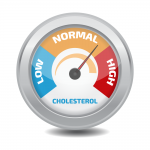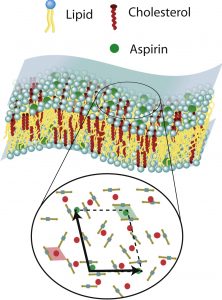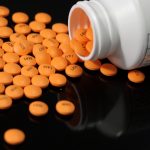
Fundamental research that uses neutron beams to investigate how our bodies work may lead to better health outcomes in the future by shedding light on our understanding of cholesterol and Aspirin.
Source: Canadian Neutron Beam Centre (CNBC)
Contact: cnbc@cnl.ca

Each of the trillions of cells in the human body has a lipid membrane that surrounds it. The existence of ‘rafts’ in cell membranes was hypothesized to explain a wide range of cellular functions. These rafts, conceptualized as tiny islands of order floating in oceans of less-orderly lipids, were believed to be induced by cholesterol. Their existence was debated for many years because observation of these small and short-lived rafts proved challenging. However, multiple direct experimental observations of these rafts have now been obtained using neutrons from the Canadian Neutron Beam Centre.
A research team, led by Professor Maikel Rheinstadter of McMaster University, is now building on these observations to learn about the role of cholesterol in these rafts, as well as how Aspirin affects them. The research team is using a combination of computer simulations and neutron diffraction at the CNBC to study controlled lipid membranes that model cell membranes.
The team published recent findings in the top physics journal Physical Review Letters. They identified three structures involving cholesterol molecules in model membranes: (1) pairs of cholesterol molecules bound to each other and floating in the lipid outside the rafts; (2) rafts containing both lipid and cholesterol molecules forming an orderly pattern; and (3) cholesterol plaques.
The results illuminate how Aspirin disrupts the structures that cholesterol wants to create in the membranes.

Illustration of a lipid bilayer containing cholesterol and Aspirin molecules in a super-lattice (black arrows). Different lipid environments are highlighted in green and red
The research team also examined the effects of adding Aspirin to these membranes. In addition to relieving headaches and fevers, Aspirin is known to increase positive outcomes for patients with high cholesterol; cholesterol stiffens membranes, while Aspirin loosens them. The exact mechanisms at play, however, were not fully understood.
Joining with Professor Thad Harroun’s team at Brock University, the researchers used x‑ray diffraction to show that Aspirin locally disrupts membrane organization, creating disorder that makes raft formation difficult. Then, using neutron diffraction, they examined the molecular organization of the lipids, cholesterol and Aspirin. The results show that the Aspirin molecules organize in a regular pattern throughout the membrane, with each Aspirin molecule associating with two lipid molecules.
Further, the rafts were no longer observed when Aspirin was added, confirming that the presence of Aspirin frustrates raft formation. These results add to a growing body of evidence that Aspirin exerts its influence in membranes through non-specific interactions (as opposed to binding to the cholesterol, for example). These findings were published in 2015 in Biochimica et Biophysica Acta (BBA) – Biomembranes.
DOI:10.1103/PhysRevLett.113.228101
DOI:10.1016/j.bbamem.2014.11.023

